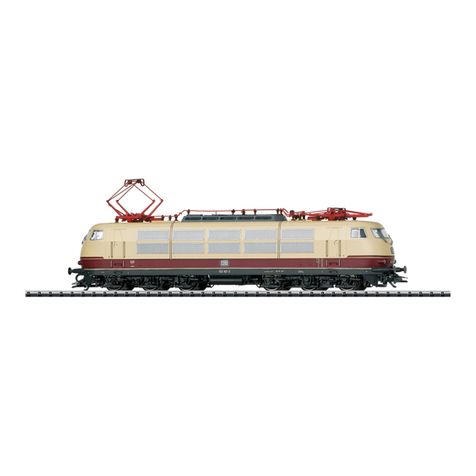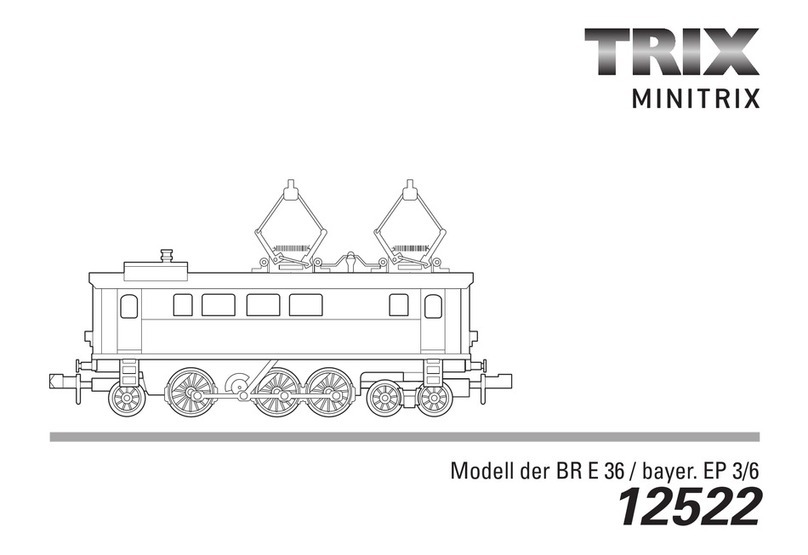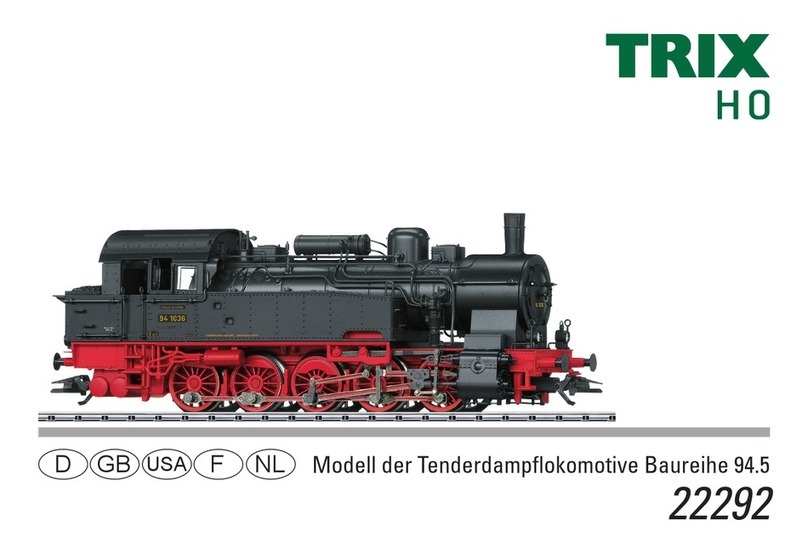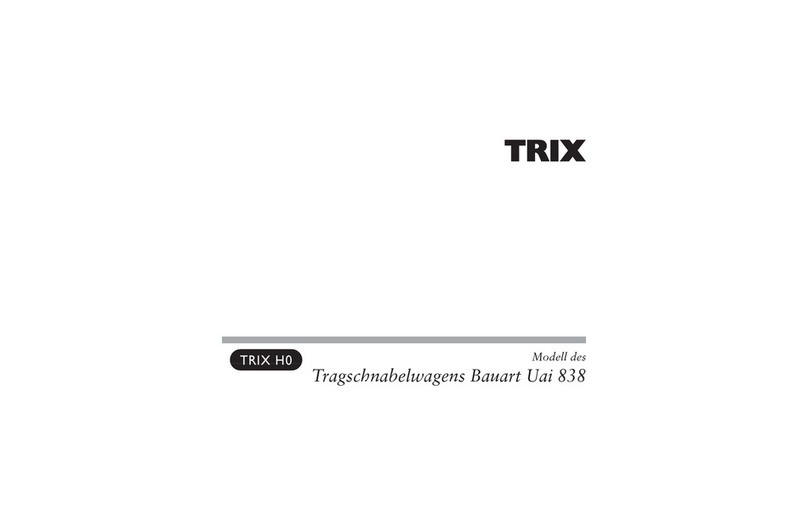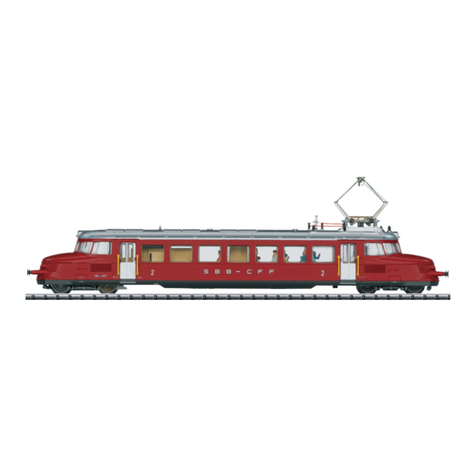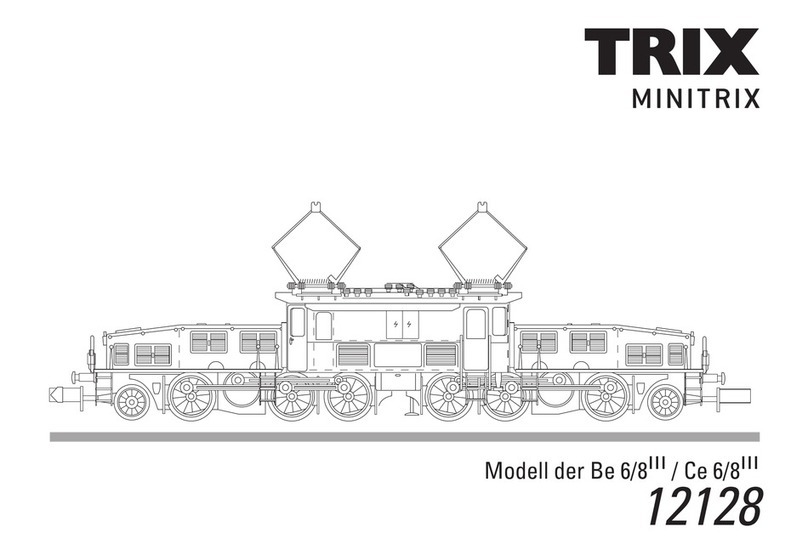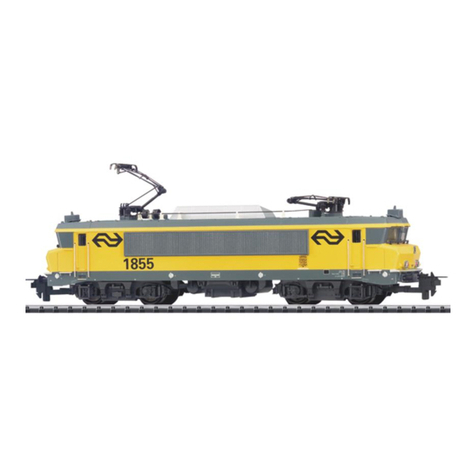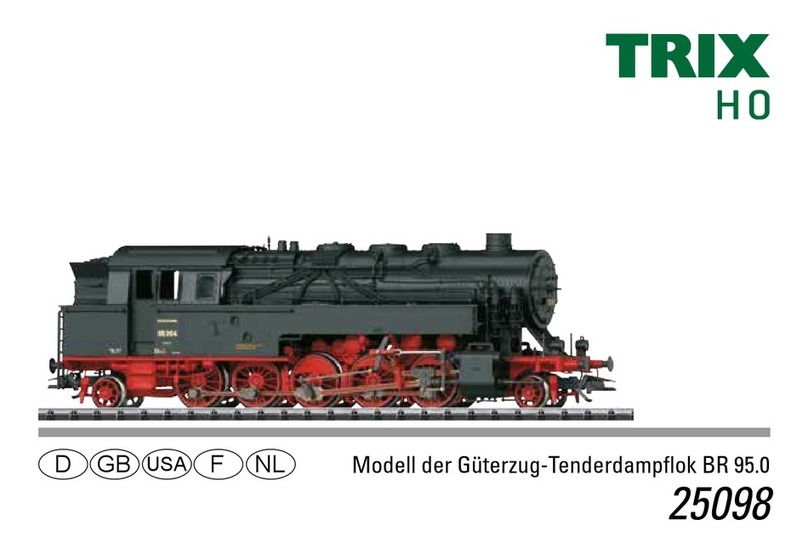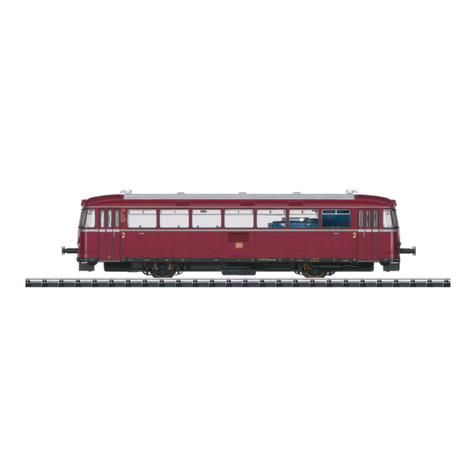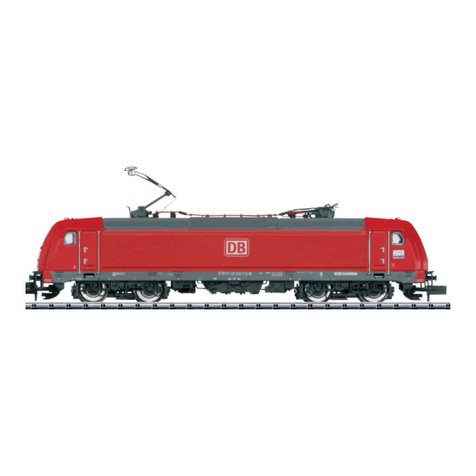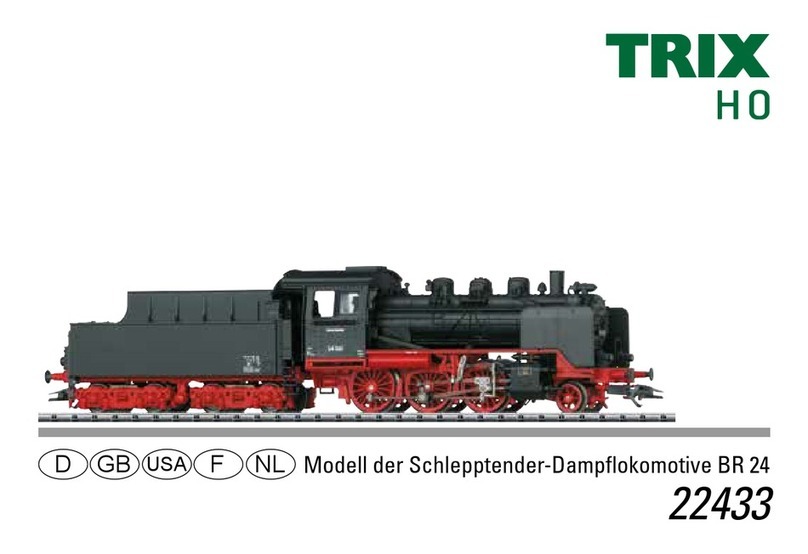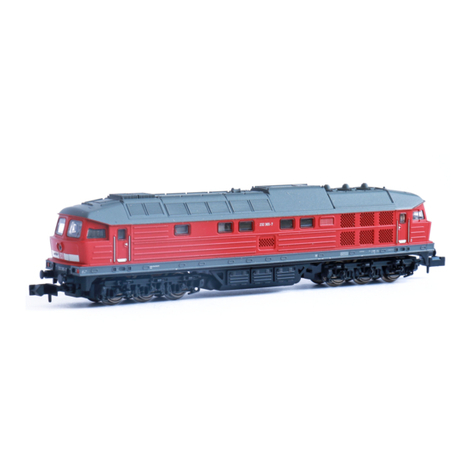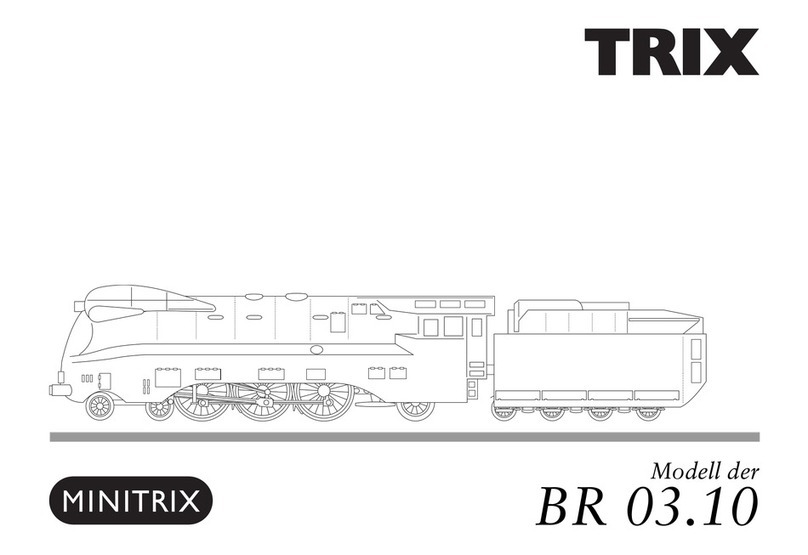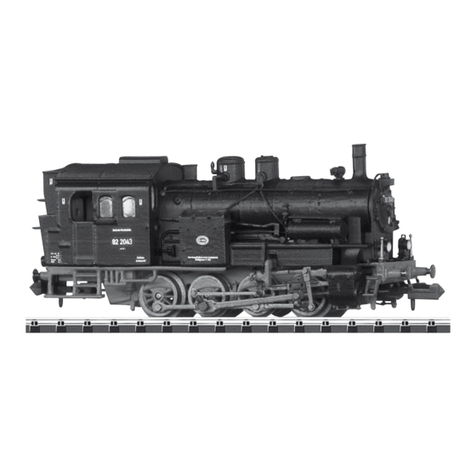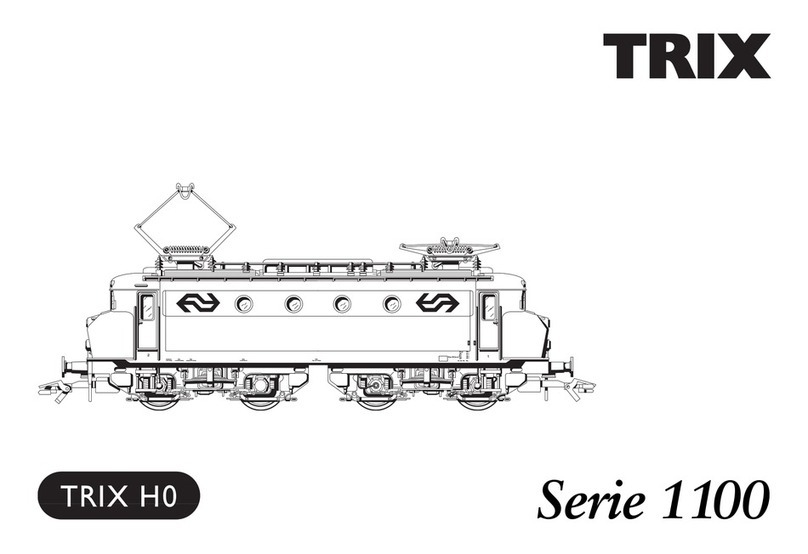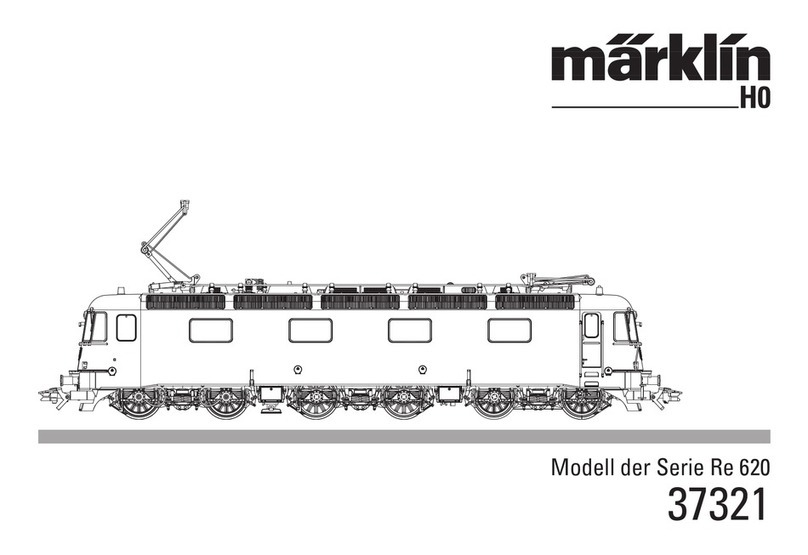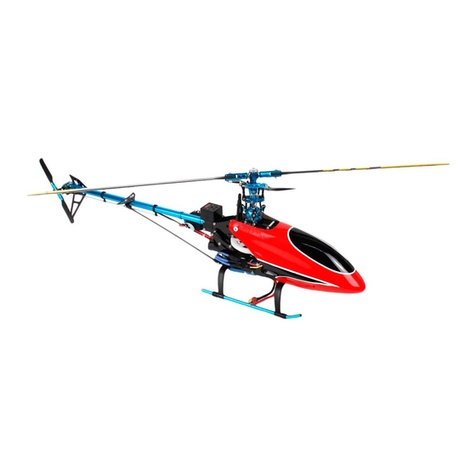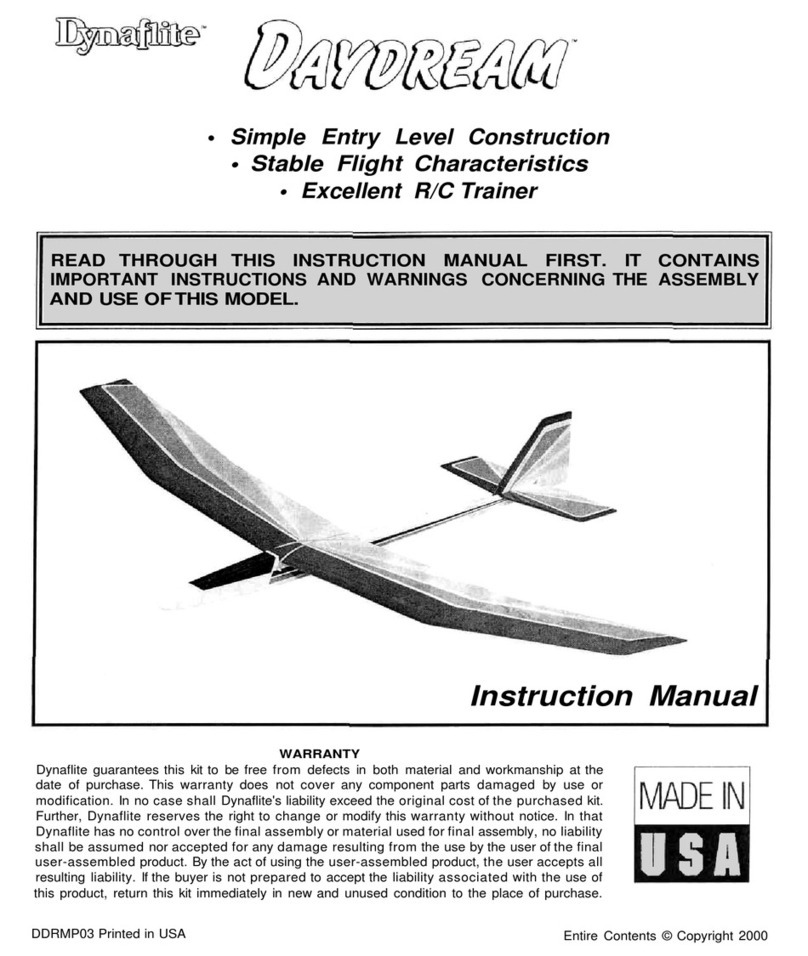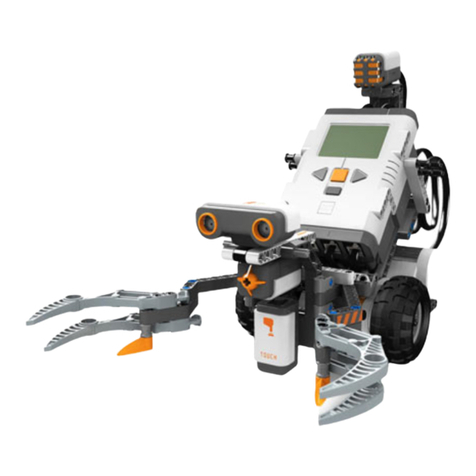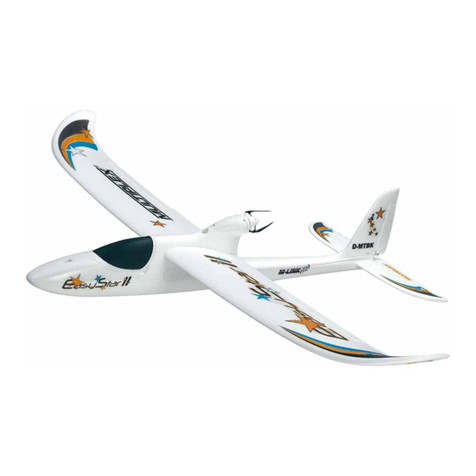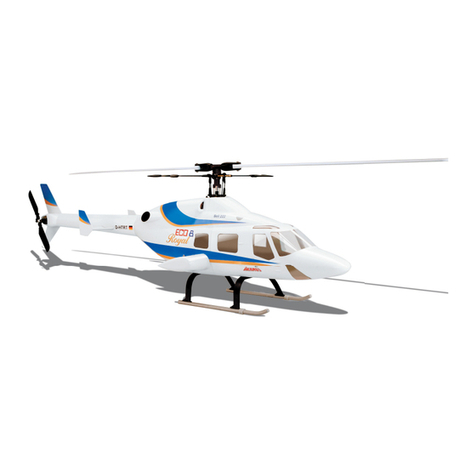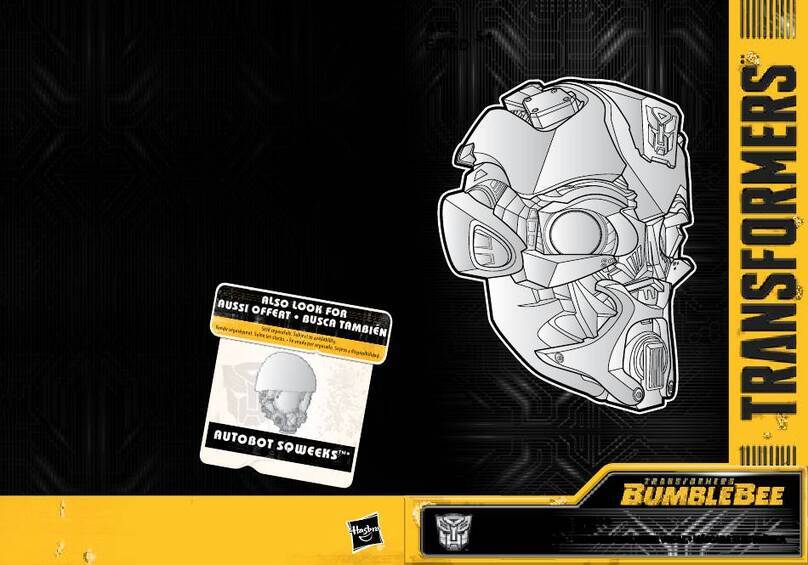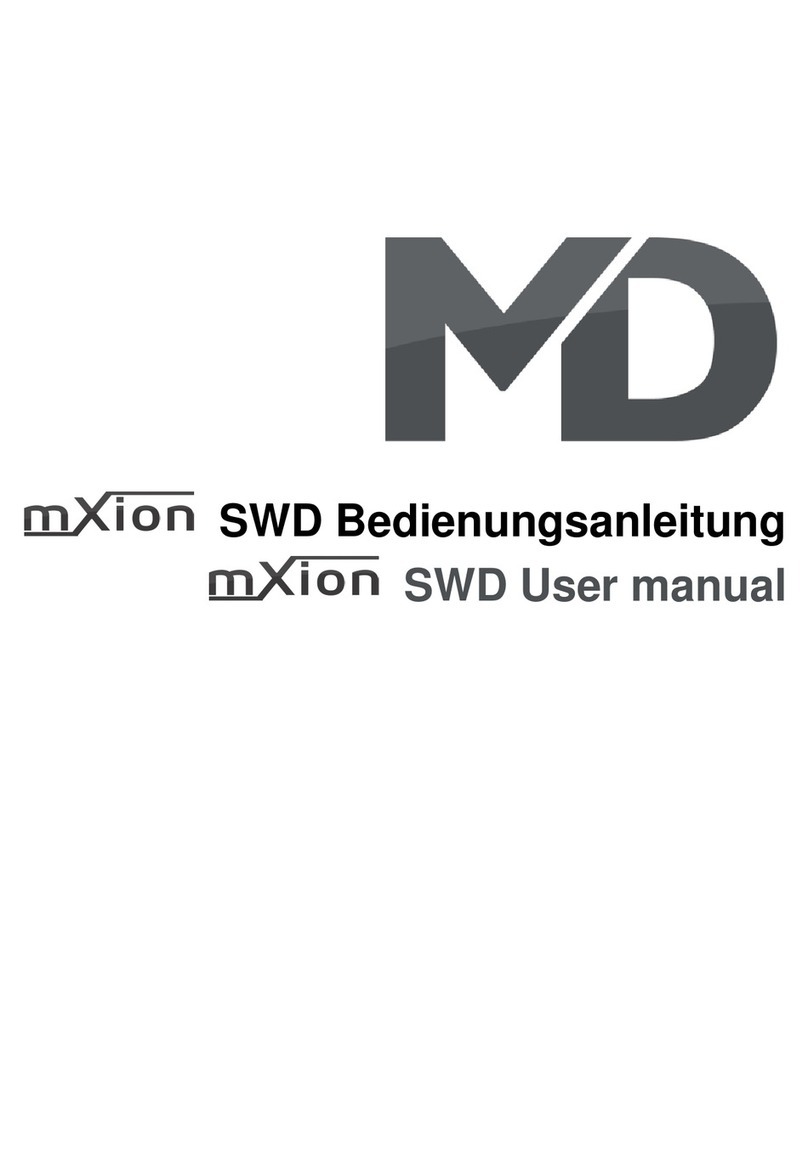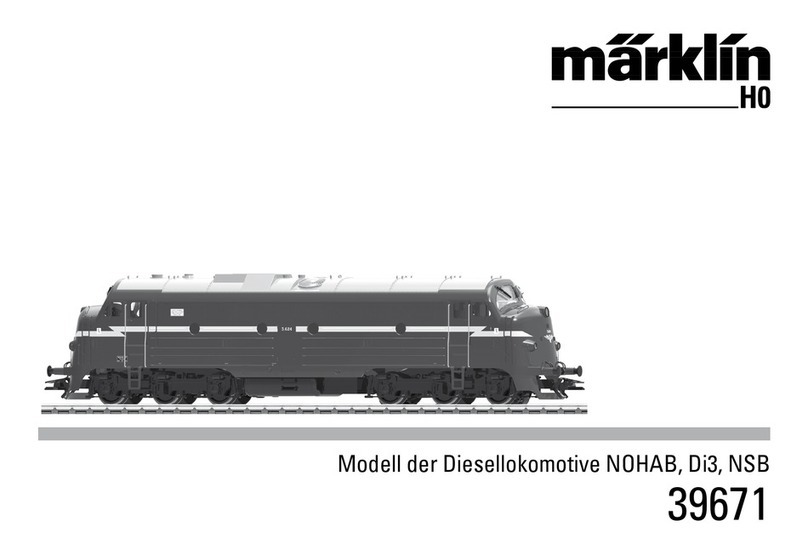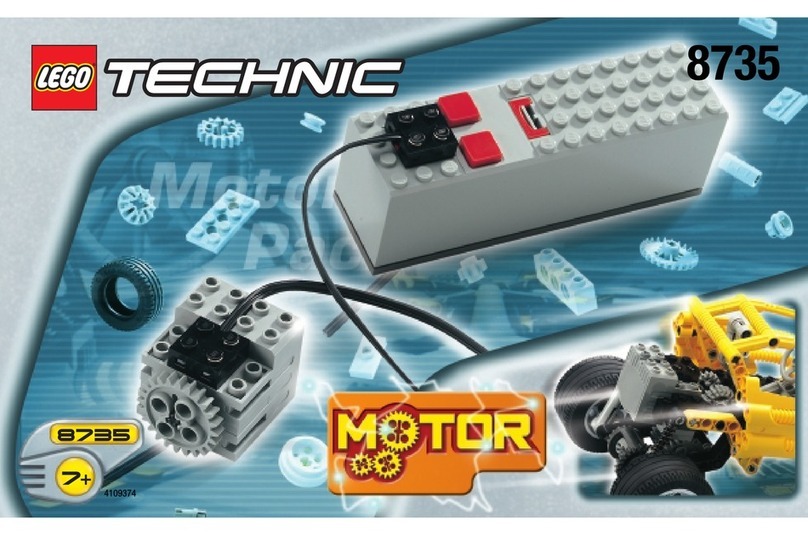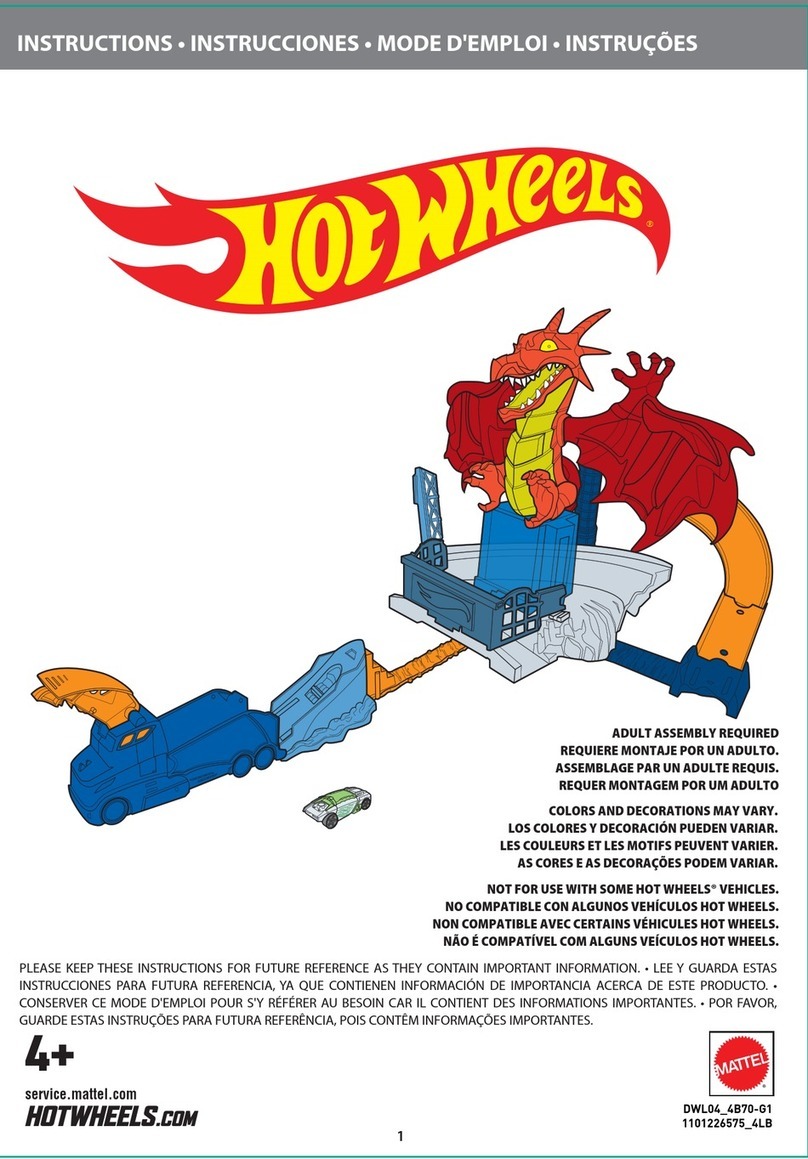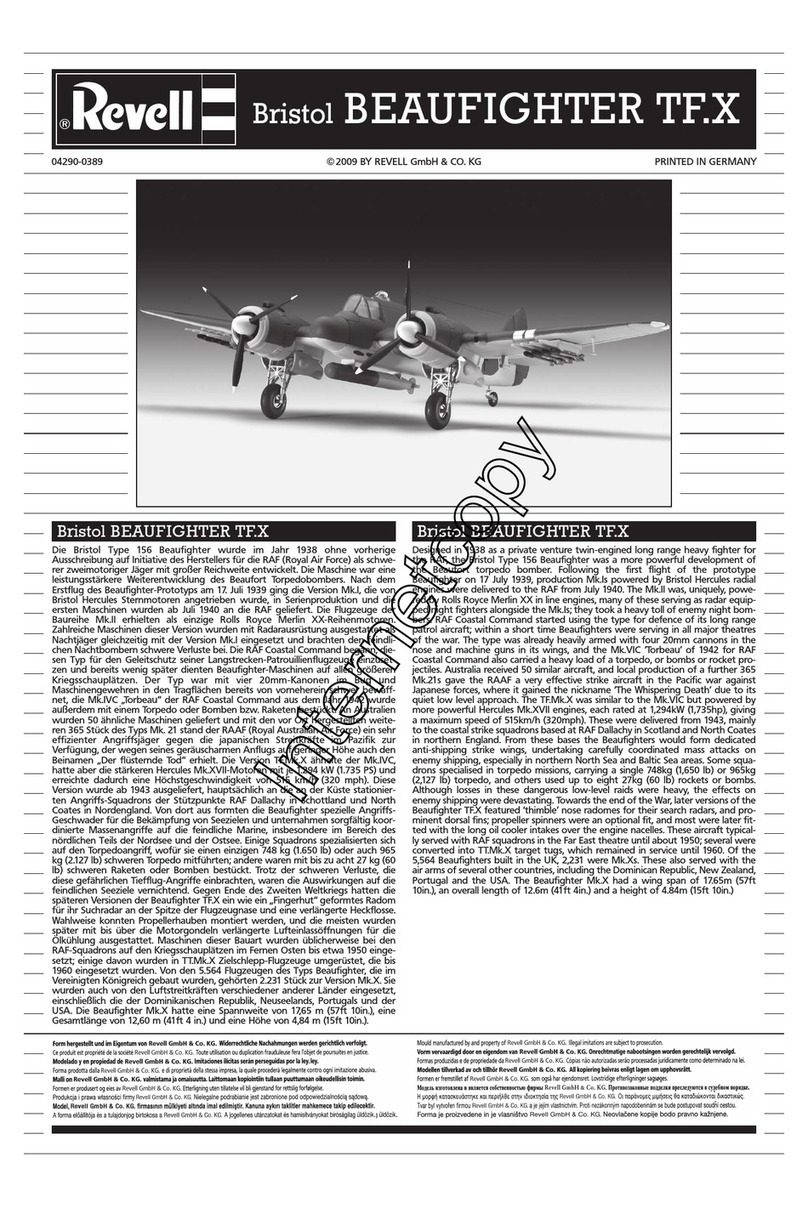
9
• Various controllable functions.
• The full range of functions is only available under DCC
and mfx.
• Built-in headlights that change over with the direction of
travel. They can be turned on and off in digital operation.
• A smoke generator can be retrofitted to the locomotive -
also for analog operation.
• Minimum radius for operation is 360 mm/14-3/16“.
Multi-Protocol Operation
Analog Operation
This decoder can also be operated on analog layouts or ar-
eas of track that are analog. The decoder recognizes alter-
nating current (DC) and automatically adapts to the analog
track voltage. All functions that were set under mfx or DCC
for analog operation are active (see Digital Operation).
Digital Operation
The decoders are multi-protocol decoders. These decoders
can be used under the following digital protocols: mfx, DCC
or MM.
Address set at the factory: DCC 03 / MM 64
The digital protocol with the most possibilities is the highest
order digital protocol. The sequence of digital protocols in
descending order is:
Priority 1: mfx
Priority 2: DCC
Priority 3: MM
Safety Notes
• This locomotive is only to be used with the operating
system it is designed for.
• Analog max. 15 volts DC, digital max. 22 volts AC.
• This locomotive must never be supplied with power from
more than one power pack.
• Please make note of the safety notes in the instructions
for your operating system.
• The feeder track must be equipped to prevent inter-
ference with radio and television reception, when the
locomotive is to be run in conventional operation. The
E611 655 interference suppression set is to be used for
this purpose. The interference suppression set is not
suitable for digital operation.
• WARNING! Sharp edges and points required for operation.
• Do not expose the model to direct sunlight, extreme
changes in temperature, or high humidity.
• The LEDs in this item correspond to Laser Class 1 accor-
ding to Standard EN 60825-1.
Important Notes
• The operating instructions and the packaging are a com-
ponent part of the product and must therefore be kept as
well as transferred along with the product to others.
• Please see your authorized Trix dealer for repairs or
spare parts.
• The warranty card included with this product specifies
the warranty conditions.
• Disposing: www.maerklin.com/en/imprint.html
